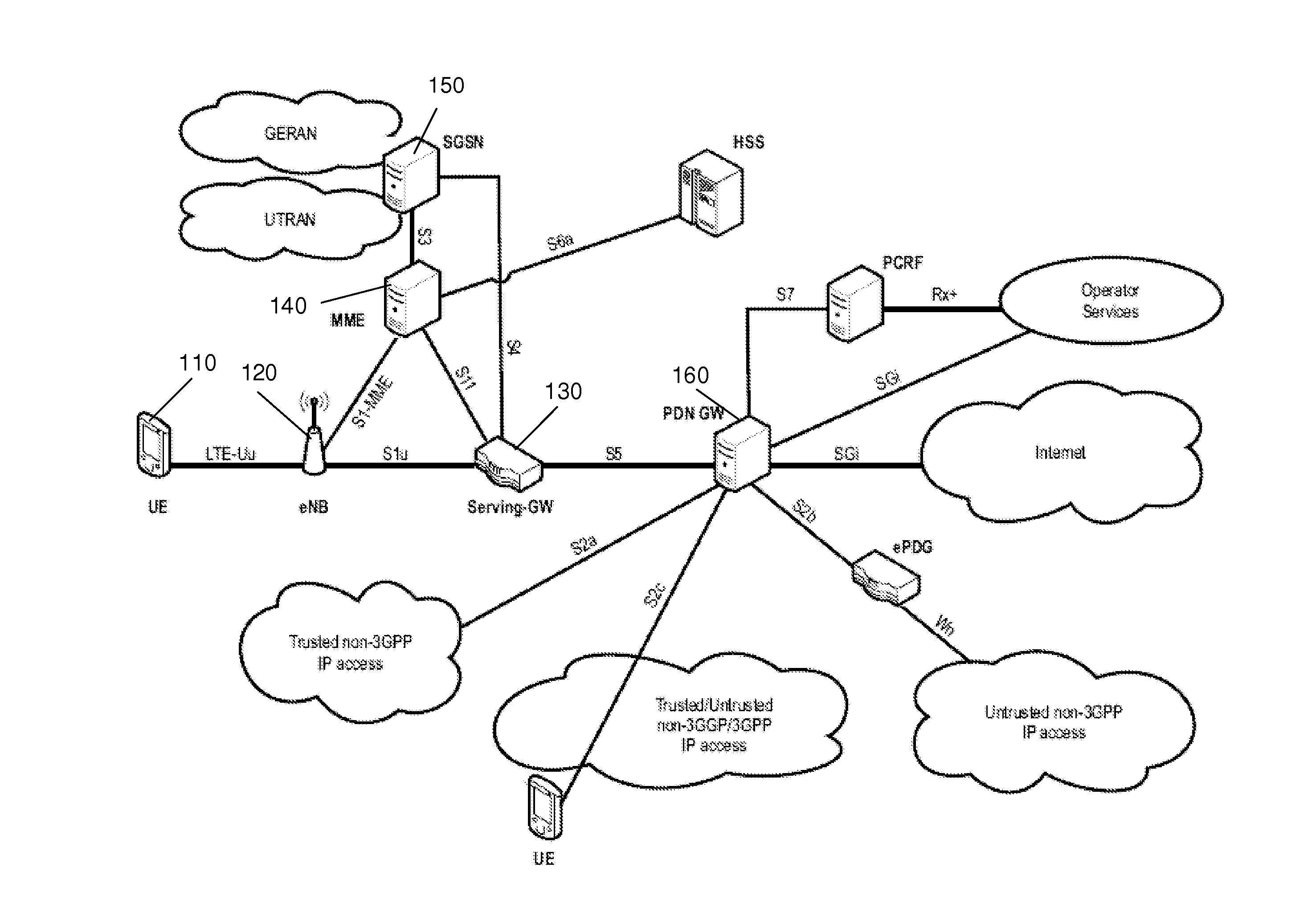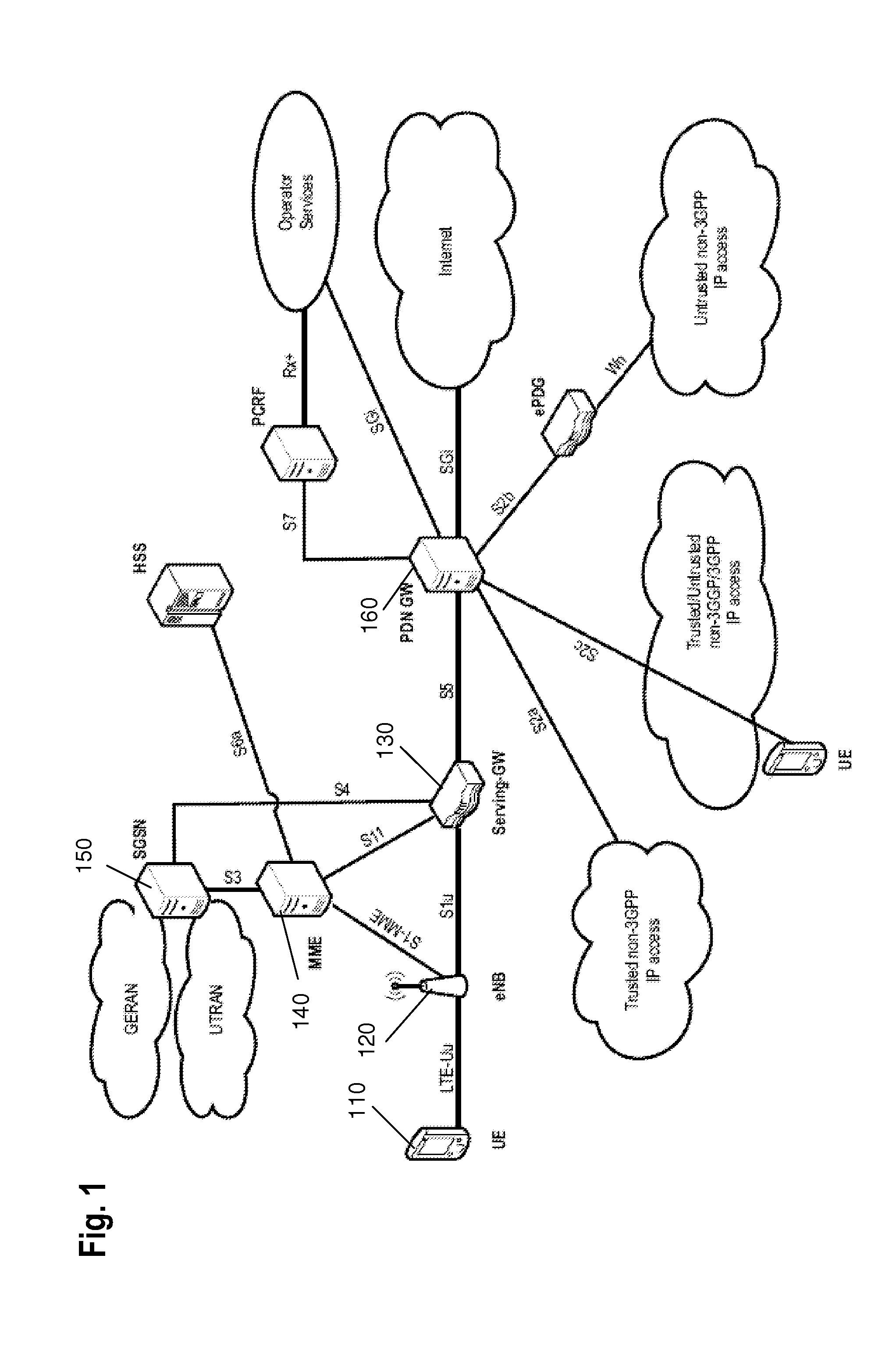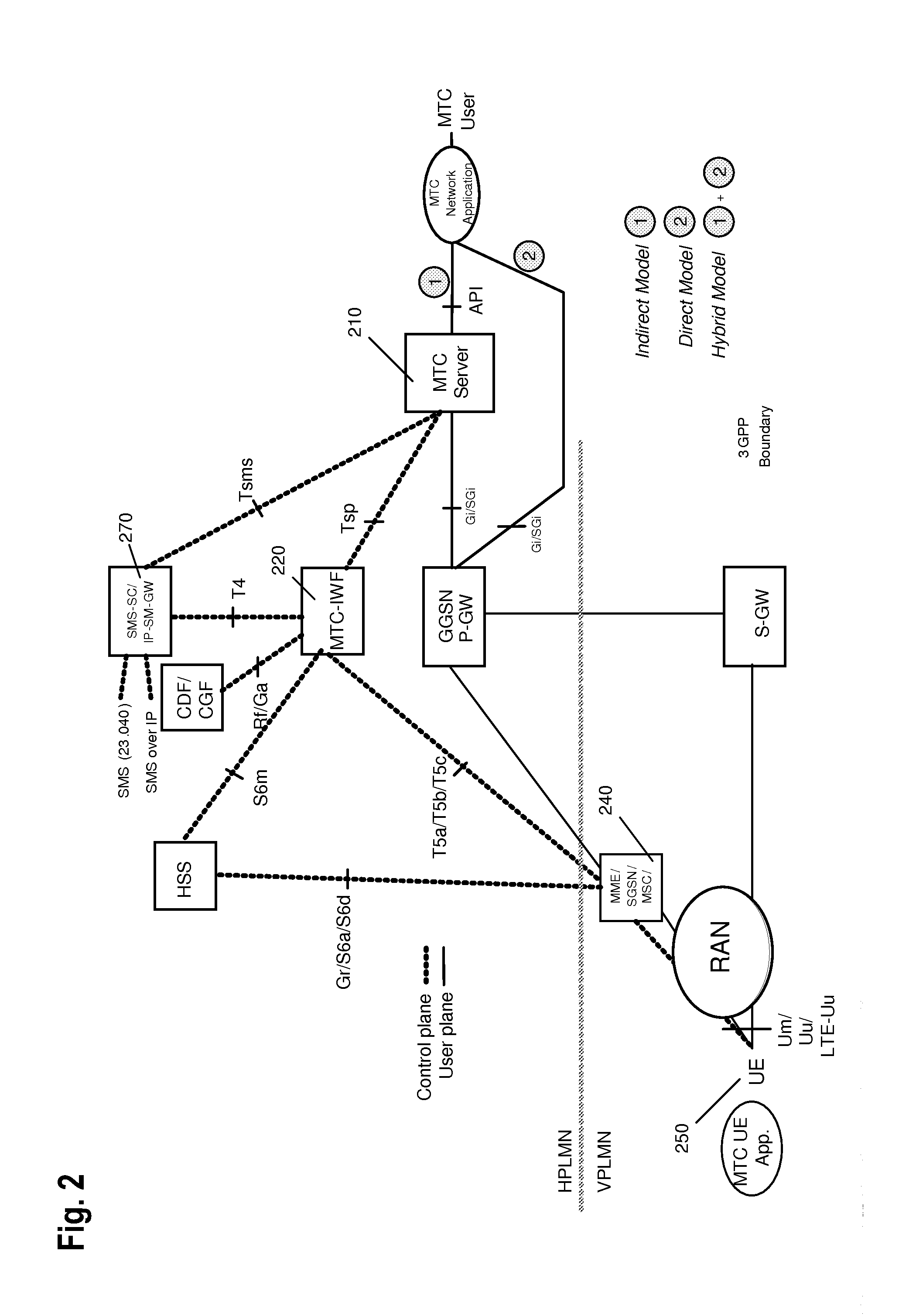Device triggering and apn-based congestion control
a technology of apn and apn, applied in the direction of frequency-division multiplex, machine-to-machine/machine-type communication service, instruments, etc., can solve the problems of inability to store the sm-bo timer without a corresponding context, congestion or overload of the network, etc., and achieve the effect of reducing the number of sm-bo timers and reducing the number of sm-bo tim
- Summary
- Abstract
- Description
- Claims
- Application Information
AI Technical Summary
Benefits of technology
Problems solved by technology
Method used
Image
Examples
Embodiment Construction
[0103]In this document, the term such as “mobile node” designates a physical entity within a communication network. One node may have several functional entities. A functional entity refers to a software or hardware module that implements and / or offers a predetermined set of functions to other functional entities of a node or the network. Nodes may have one or more interfaces that attach the node to a communication facility or medium over which nodes can communicate. Similarly, a network entity may have a logical interface attaching the functional entity to a communication facility or medium over it may communicate with other functional entities or correspondent nodes.
[0104]The term “server” or “triggering server” here refers to an entity which may be within the network or in an external network or an external node. It may be, for instance a server for automatically collecting data from a (MTC) terminal or a plurality of terminals and capable of sending to the terminal triggering re...
PUM
 Login to View More
Login to View More Abstract
Description
Claims
Application Information
 Login to View More
Login to View More - R&D
- Intellectual Property
- Life Sciences
- Materials
- Tech Scout
- Unparalleled Data Quality
- Higher Quality Content
- 60% Fewer Hallucinations
Browse by: Latest US Patents, China's latest patents, Technical Efficacy Thesaurus, Application Domain, Technology Topic, Popular Technical Reports.
© 2025 PatSnap. All rights reserved.Legal|Privacy policy|Modern Slavery Act Transparency Statement|Sitemap|About US| Contact US: help@patsnap.com



